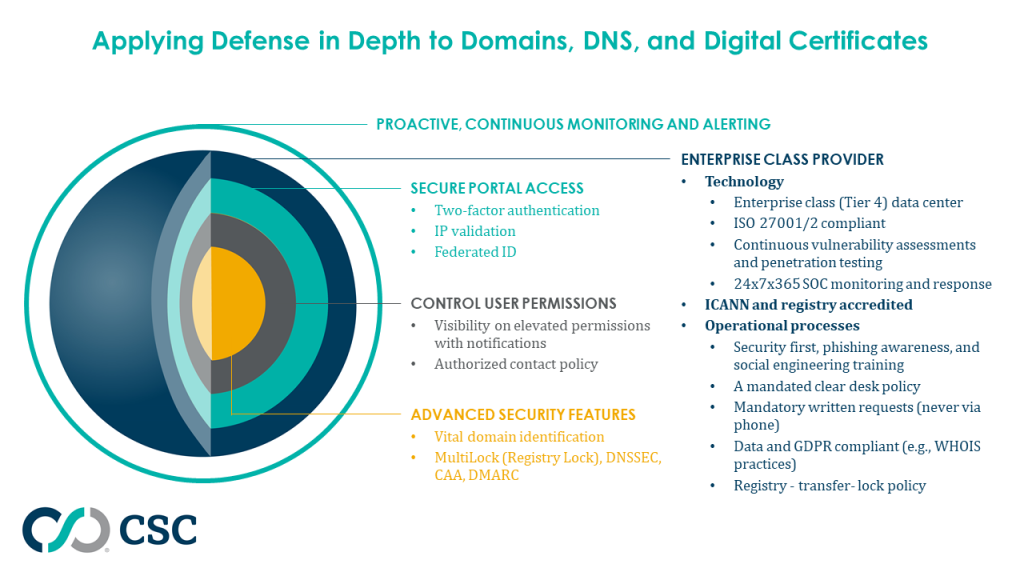DNS, Domain Names, and Certificates: The Missing Links in Most Cyber Security Risk Postures
By Vincent D’Angelo
Global Director Corporate Development and Strategic Alliances
Share this post



In 2019, we’ve seen a surge in domain name system (DNS) hijacking attempts and have relayed warnings from the U.S. Cybersecurity and Infrastructure Agency, U.K.’s Cybersecurity Centre, ICANN, and other notable security experts. Although, the topic has gained popularity amongst CIOs and CISOs, most companies are still overlooking important security blind spots when it comes to securing their digital assets outside the enterprise firewalls—domains, DNS, digital certificates.
In fact, most organizations, regardless of geographic location or industry, are exposed to these risks. Our most recent Domain Name Security report featuring insights from the defense, media, and financial sectors illustrates the risk trends.
- Do you know who your domain name registrar is (the domain name management company that holds the keys to the kingdom)?
- What do you know about your domain name registrar’s controls, security, policies and processes?
I like to think of this topic like the electricity that powers our homes. Everyone expects their lights to work, but then, what happens when the power goes out? In the enterprise environment, domain names, DNS, and certificates are the lifeline to any internet-based application including websites, email, apps, virtual private networks (VPNs), voice over IP (VoIP) and more.
Unfortunately, the security of these critical digital assets is often overlooked because management responsibilities are often split between legal and IP, marketing, IT and security, and third parties, like agencies and law firms. As a result, cyber criminals and state-sponsored actors are capitalizing on these vulnerabilities to launch social engineering attacks in an attempt to hijack an organization’s entire web presence. Most of these attacks are occurring by targeting critical nodes, such as domain name registrars, which can lead to:
- Loss of control of business-critical internet assets like websites, email, apps, VPNs, and VoIP
- Compliance risks and data breaches, which can result in fines, especially with the introduction of the EU’s General Data Protection Regulation and new privacy laws
- Reputation loss, which leads to loss of revenue and a decrease in market valuation
- Loss of business-critical intellectual property
- Risk of transfer of funds to unauthorized third parties
To date, the focus of cyber security has primarily been to secure as much as possible behind the firewall. The reality is that domain names, DNS, and digital certificates are publicly accessible and haven’t been a focus in most organizations. Security goes beyond the firewall, not just behind it. The “electricity” that powers your business needs constant vigilance and management.
A defense in depth approach can help companies apply the necessary multi-layered security controls required to defend their digital assets outside the firewall.

Here are some resources that may be helpful in raising awareness of this topic in your organization:
- DNS Hijacking: Security Learnings From the Latest Incidents
- Mitigate Security Threats Through Digital Certificate Policy Enforcement
- Confused About Domain Locks? Understand the Intricacies and Security Effectiveness
- CSC’s latest innovation, CSC Security CenterSM, the first-of-its-kind platform that identifies and manages the aforementioned risks beyond the firewall
- CSC’s Cyber Security Report which references current domain security trends and best practices